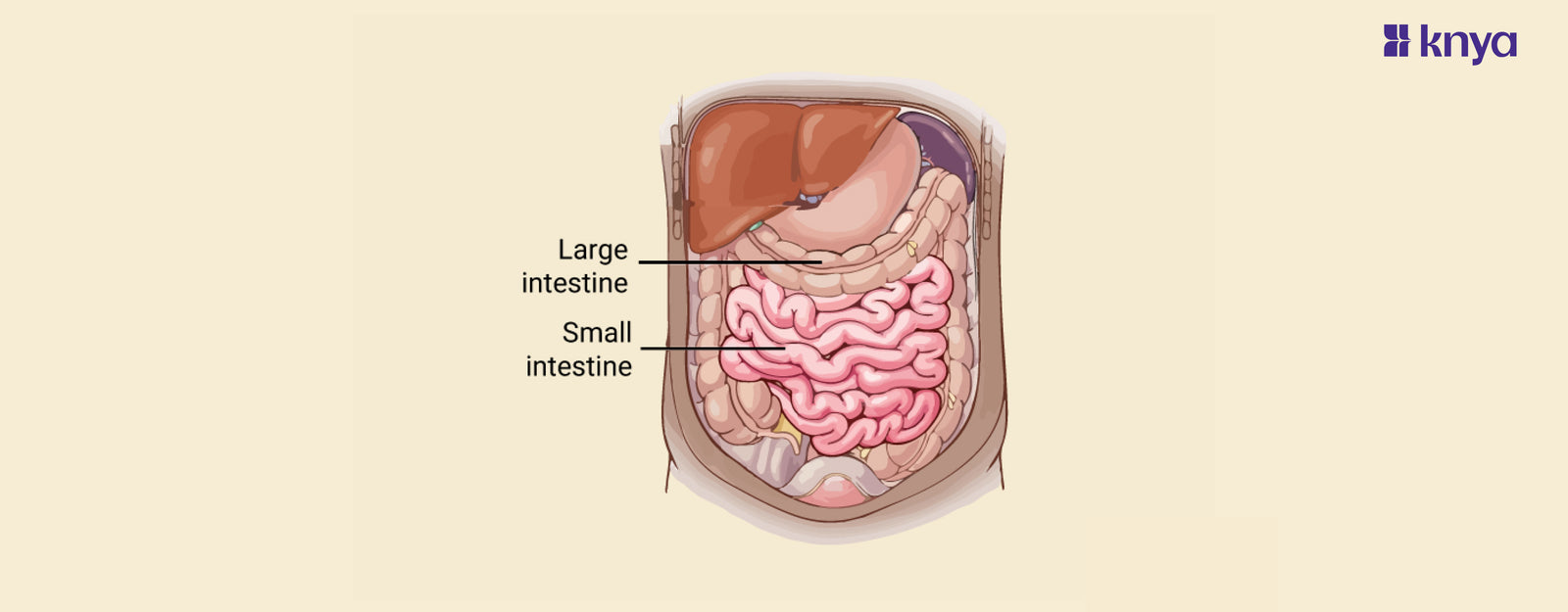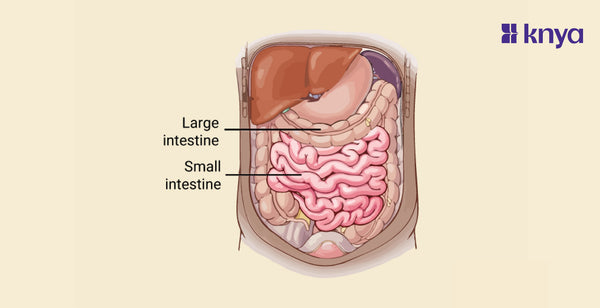Difference Between Small Intestine and Large Intestine Anatomy: The digestive system is a marvel of intricate structures working in harmony to break down and absorb nutrients from the food we consume. At the heart of this digestive symphony lie two essential components: the small intestine and the large intestine. These vital organs play distinct yet complementary roles in the complex process of nutrient absorption and waste elimination. In this exploration of anatomy, we unravel the nuanced differences between the small and large intestines, shedding light on their respective structures and functions within the digestive journey. From their lengths and diameters to the unique features and differences that define their roles, join us on a fascinating journey through the intricate world of gastrointestinal anatomy.
Difference Between Small Intestine and Large Intestine Anatomy
Here's a simple table highlighting the key differences between the anatomy of the small intestine and the large intestine:
|
Aspect |
Small Intestine |
Large Intestine |
|
Location |
Extends from the stomach to the large intestine |
Connects to the small intestine and ends at the rectum |
|
Length |
Longer (about 20 feet on average) |
Shorter (about 5 feet on average) |
|
Diameter |
Smaller in diameter compared to the large intestine |
Larger in diameter compared to the small intestine |
|
Segments |
Divided into three segments: duodenum, jejunum, ileum |
Divided into the cecum, colon (ascending, transverse, descending, sigmoid), rectum, and anal canal |
|
Structure |
Thinner walls, numerous folds, and villi for absorption |
Thicker walls, haustra (pouches), and lacking villi |
|
Muscle Structure |
Contains a more extensive muscular layer |
Has a thicker muscular layer, aiding in the formation of fecal matter into solid stool |
|
Function |
Primary site for nutrient absorption (vitamins, minerals, and most nutrients) |
Absorbs water and electrolytes, forms and stores feces, and absorbs some vitamins |
|
Digestive Role |
Continues the digestion of food initiated in the stomach |
Absorbs water and electrolytes from undigested material |
|
Bacterial Activity |
Fewer bacteria due to the role in nutrient absorption |
More extensive bacterial activity, contributes to the breakdown of undigested material |
|
Appendix Presence |
Absent |
May have an appendix attached to the cecum |
|
End Connection |
Connects to the large intestine at the ileocecal valve |
Connects to the small intestine at the ileocecal valve |
Shop best Lab Coats from Here!
What is Small Intestine Anatomy
The small intestine is a vital part of the digestive system, where the majority of nutrient absorption takes place. It is a long, tube-like organ that extends from the stomach to the large intestine. The small intestine is divided into three main segments: the duodenum, jejunum, and ileum. Let's explore the key aspects of the small intestine anatomy:
- Duodenum:
- The duodenum is the first segment of the small intestine, connecting directly to the stomach.
- It receives partially digested food from the stomach, along with digestive juices from the pancreas and bile from the liver (via the common bile duct).
- Jejunum:
- The jejunum is the middle portion of the small intestine.
- It is where the majority of nutrient absorption occurs, particularly carbohydrates and proteins.
- Ileum:
- The ileum is the final and longest segment of the small intestine, connecting to the large intestine at the ileocecal valve.
- It continues the absorption of nutrients, including bile salts and vitamin B12.
Structural Features:
- The small intestine has a significantly larger surface area for absorption due to numerous finger-like projections called villi.
- Each villus contains blood vessels and a lacteal (a vessel of the lymphatic system), enhancing the absorption of nutrients.
- Microvilli, tiny projections on the surface of absorptive cells, further increase the surface area for nutrient absorption.
Muscular Wall:
- The muscular wall of the small intestine consists of smooth muscle layers that facilitate the movement of digested material through the organ.
- Peristaltic contractions help propel the contents forward, aiding in digestion and absorption.
Blood Supply:
- The small intestine is richly supplied with blood vessels, including arteries and veins, ensuring efficient nutrient transport to various parts of the body.
Role in Digestion:
- The small intestine plays a crucial role in the digestion of carbohydrates, proteins, and fats, breaking them down into smaller molecules for absorption.
- Enzymes secreted by the small intestine and accessory organs further aid in the digestive process.
Understanding the anatomy of the small intestine provides insight into its intricate structure and function, emphasizing its central role in the absorption of nutrients critical for overall health.
What is Large Intestine Anatomy
The large intestine, also known as the colon, is a key component of the digestive system responsible for further processing undigested food, absorbing water and electrolytes, and forming feces for elimination. It follows the small intestine in the digestive tract and extends from the cecum to the rectum. Let's delve into the anatomy of the large intestine:
Major Segments:
- Cecum:
- The cecum is the first part of the large intestine and receives material from the small intestine through the ileocecal valve.
- It plays a role in the absorption of fluids and salts and serves as a site for the fermentation of indigestible carbohydrates.
- Colon:
- The colon is divided into several segments: the ascending colon, transverse colon, descending colon, and sigmoid colon.
- The ascending colon moves upward on the right side of the abdomen, the transverse colon crosses horizontally, the descending colon moves downward on the left side, and the sigmoid colon connects to the rectum.
- Rectum:
- The rectum is the final portion of the large intestine, connecting to the anal canal.
- It serves as a temporary storage site for formed feces before elimination.
Structural Features:
- Haustra:
- The colon features pouches called haustra, formed by bands of muscle (taeniae coli). Haustra aids in the mixing and propulsion of contents.
- Appendix:
- The appendix is a small, finger-like projection attached to the cecum. While its function is not entirely clear, it may play a role in immune function.
Muscular Wall:
- The muscular wall of the colon is thicker than that of the small intestine, aiding in the formation of feces.
- Peristaltic movements in the colon propel fecal material toward the rectum.
Blood Supply:
- The large intestine is supplied with blood by the mesenteric arteries, ensuring oxygen and nutrient delivery to the tissues.
Role in Digestion:
- While the large intestine is not primarily involved in nutrient absorption, it absorbs water and electrolytes from undigested material, contributing to the formation of feces.
- Bacterial fermentation in the colon produces gases and certain vitamins, contributing to the overall digestive process.
Understanding the anatomy of the large intestine provides insights into its specialized functions, including water absorption and the formation of feces, crucial for the final stages of digestion and waste elimination.
Similarity Between Small Intestine and Large Intestine Anatomy
Here are some simplified similarities between the anatomy of the small intestine and the large intestine:
- Tube-like Structure:
- Both the small intestine and the large intestine are tube-like structures that form part of the digestive system.
- Muscular Walls:
- Both intestines have muscular walls that aid in the movement of contents through peristaltic contractions.
- Blood Supply:
- Both are supplied with blood vessels to support their functions, including nutrient absorption and waste elimination.
- Segments:
- Both intestines are divided into segments, each serving specific roles. The small intestine has the duodenum, jejunum, and ileum, while the large intestine includes the cecum, colon, and rectum.
- Absorption of Water:
- Both play a role in absorbing water from the contents, helping in the formation of feces.
- Connection Point:
- They are connected at the ileocecal valve, where the small intestine ends, and the large intestine begins.
- Peristaltic Movements:
- Peristaltic movements occur in both intestines, facilitating the movement of digested material through their lengths.
While each intestine has unique functions, these shared features contribute to their collaborative role in the overall digestive process.
|
Check out More Articles |
|















